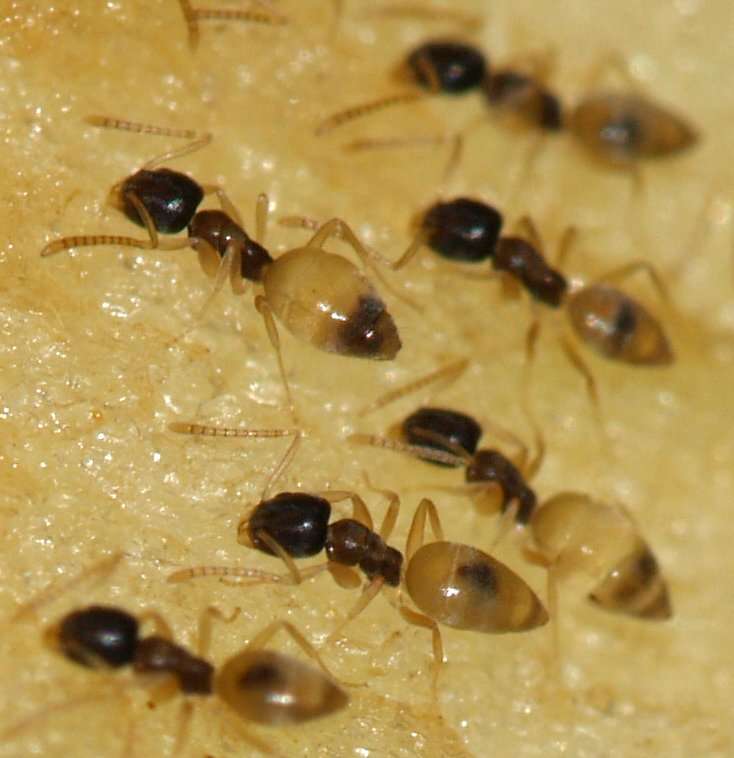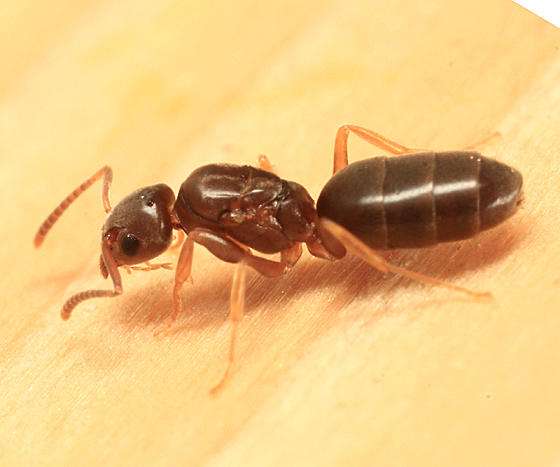
This species of tropical tramp has been imported all over the world. Nests can be discovered in the ground, beneath stones, in the bark of trees, and in other cracks. Unknown is its native habitat. It is common in all lowland tropical homes without air conditioning.
Description
Ghost ant workers are monomorphic and 1.3 to 1.5 mm length, making them quite tiny (one-sized). They have 12-segmented antennae, and as they go closer to the tip, the segments get progressively thicker. The occipital boundary is overstepped by antennal scapes. The gaster and legs are opaque or milky white, and the head and thorax are a rich dark brown color. The thorax lacks a spine.
The gaster, which is the enlarged portion of the abdomen, has a hairless anal hole. One segment makes up the abdominal pedicel, which is the stalk-like structure directly anterior to the gaster and is typically obscured dorsally by the gaster. There are no stingers. Ghost ant workers are difficult to see due to their small size and light hue.

Distribution
The ghost ant belongs to a group of ant species collectively referred to as “tramp ants,” which are found globally in tropical and subtropical latitudes. In fact, the term “tramp ant” was formerly used to describe Tapinoma melanocephalum.
Economic importance
This species is a pest in homes. It is regarded as one of the most significant ant pests in Florida. The ghost ant can nest inside a house in addition to invading it from the outside. Although the ant eats a variety of common foods, it has been seen eating sugar, cakes, and syrups, suggesting that it may have a sweet tooth. Outside, the workers manage sap-sucking insects and scavenge for dead insects, gathering honeydew.
Due to limits on the use of toxicants in these greenhouses, the ghost ant has infiltrated quarantine greenhouses in Florida where they have proven to be impossible to manage. It has established itself in heated greenhouses in more northern regions, where it may cause issues, particularly if it protects pest plant species that produce honeydew from newly imported biological control agents.
Management
Cleaning is the finest method for ant management in the home. Ants can be attracted to and fed by any kind of food or food-related materials. Use airtight containers to store food. Eliminate ant-attracting plants and deal with pests including honeydew-producing aphids, whiteflies, and other insects. Reduce moisture sources, such as leaks and condensation.
Follow this species’ traces back to the nest if you can, then take care of the nest. If you use bait to treat the trails, check to see if the ants are eating within one or two days. Relocate the bait if necessary. Baits can be used to manage indoor colonies that nest within voids. Barrier sprays should be used to prevent foragers from entering from the outside through gaps , fissures or screens.
Table





